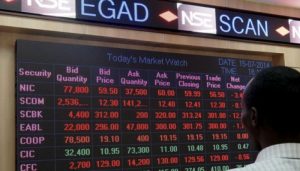Strong Year as Pensions Outperform Inflation by 26%

Zamara CEO Sundeep Raichura. [Photo/Zamara]
Kenyan pension schemes delivered their strongest returns in years, outpacing inflation by a staggering 26% in the 12 months to June 2025.
According to Zamara Consulting Actuaries Schemes Survey (Z-CASS) latest report, covering 407 schemes with KSh 1.3 trillion in assets, the report shows the industry riding high on robust returns from local equities (50.7%) and government bonds (27.8%), with schemes significantly outperforming inflation for the first time in years.
“This year’s performance is a reminder that disciplined investing, diversification, and a long-term perspective can deliver real value to pension members,” said Sundeep Raichura, Group CEO, Zamara.
Schemes Outpace Inflation
The June 2025 median return of 30.0% over 1 year, marked a significant improvement compared to recent years when pension schemes struggled to keep pace with inflation. In 2022 and 2023, annual inflation stood at 7.9% in both years, while the corresponding 1-year returns for pension schemes were just 0.8% and 6.6%, respectively.
This year, however, performance exceeded the annual inflation rate of 3.8% by a wide margin, enhancing members’ real purchasing power. The table below compares the median pension scheme returns to inflation over the 1-, 3-, and 5-year periods:
| Period Ending June 2025 | Median Return | Inflation Rate | Real Return |
| 1-Year | 30.0% | 3.8% | 26.2% |
| 3-Year (Annualized**) | 16.4% | 5.4% | 11.0% |
| 5-Year (Annualized**) | 13.0% | 6.1% | 6.9% |
Global Diversification Paid Off Over the Long Term
Offshore investments for Kenyan investors have experienced periods of volatility driven by currency movements and geopolitical risks. Nonetheless, they emerged as the top-performing asset class over both the 3-year (22.2%) and 5-year (13.9%) periods.
The asset class not only outperformed major global benchmarks but also delivered higher returns than local equities and Government Bonds, highlighting the long-term benefits of global diversification in pension portfolios.
Not all pension schemes had exposure to offshore investments; however, among the 190 schemes in the survey that did, the average allocation stood at just 2%, indicating limited uptake and potential room for further diversification.
Schemes that were more conservative in strategy, outperformed in this period.
Although moderate and aggressive schemes performed strongly over the quarter and year, it’s the conservative schemes that won in the long run. Conservative schemes in the survey are defined as those with a large allocation to Government Bonds (over 80%).
These schemes enjoyed the strongest 5-year performance, with a median annualised return of 13.1% (this means they grew by about 13.1% each year on average, adding up to a total growth of around 85% over the five years). This performance was largely supported by the sustained gains in government bonds over the long term, which form the bulk of conservative schemes’ investments.
Regulatory Reminder on Distributable Income for Defined Contribution Schemes
The strong 12-month return of 30% comes as good news for schemes with a June year-end, allowing them to lock in gains for the financial year. It’s important to note that unrealised gains and losses from fair value assessments are excluded from distributable income. As such, defined contribution (DC) schemes may see lower effective distributable, depending on their portfolio structure and realised returns.
“The findings emphasize not just the strong recent returns, but also the importance of diversification and viewing retirement benefits from a long-term perspective. Pension schemes need to remain attuned to asset class behaviour, regulatory developments, and risk-adjusted strategies to support sustainable outcomes for their members over time,” said Neha Datta, Head of Asset Consulting, Zamara Group.






